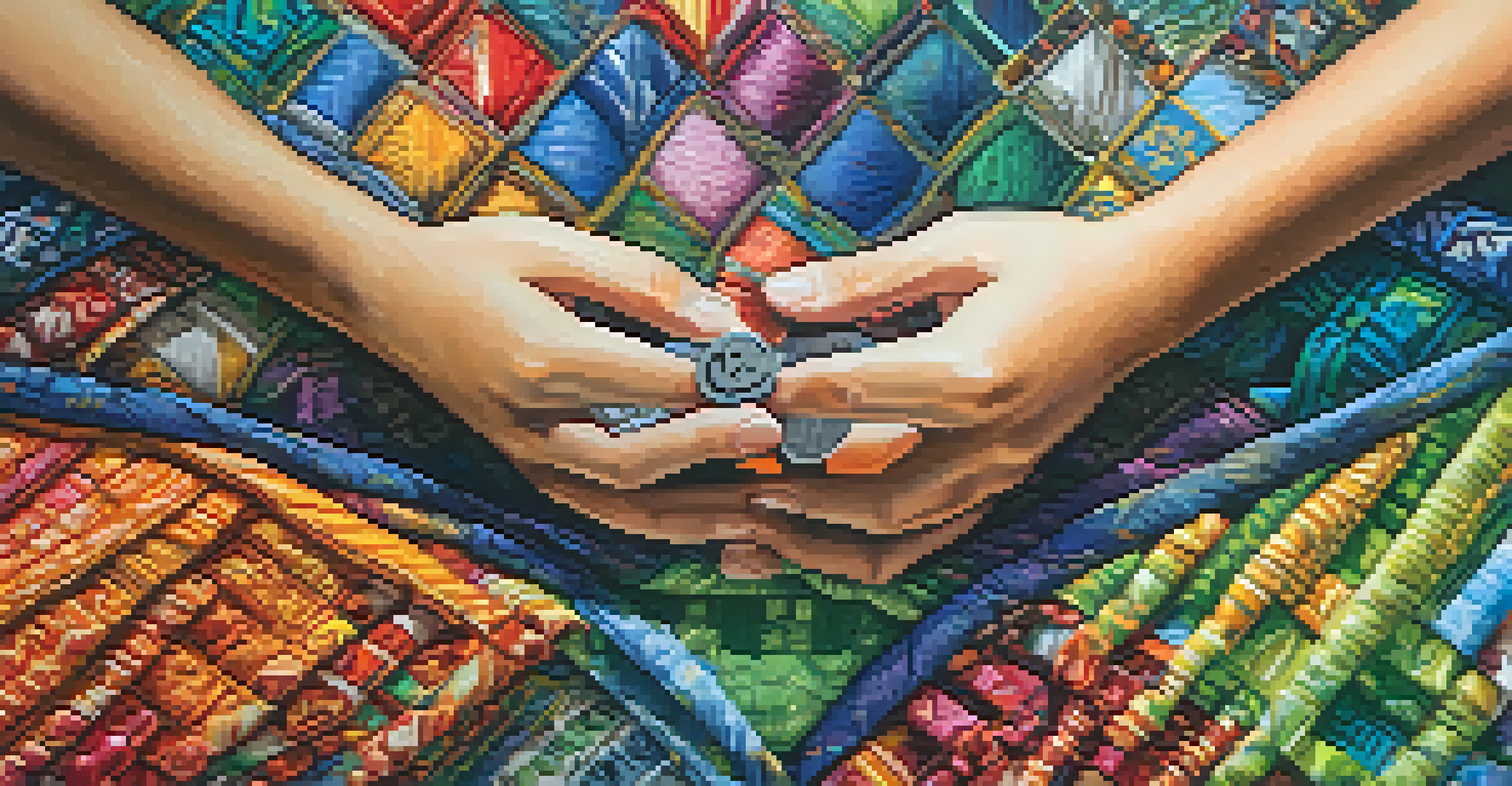Sustainable Fashion: A Response to Environmental Movements

Understanding Sustainable Fashion's Importance
Sustainable fashion is more than just a trend; it's a vital response to the environmental crisis. With textile production significantly contributing to pollution and waste, the fashion industry has a critical role in changing its practices. The concept revolves around creating clothing in a way that's mindful of both the planet and its people.
Fashion is the armor to survive the reality of everyday life.
By prioritizing eco-friendly materials and ethical labor practices, sustainable fashion seeks to reduce the environmental footprint of clothing. This shift helps combat issues like water scarcity, carbon emissions, and the exploitation of workers. In essence, it’s about rethinking how we produce, consume, and dispose of fashion items.
As consumers become more aware of their purchasing power, the demand for sustainable options is growing. This change signifies a collective movement towards a more responsible industry, where choices reflect a commitment to preserving our planet for future generations.
The Impact of Environmental Movements on Fashion
Environmental movements have sparked a significant shift in public consciousness regarding sustainability. Activists and organizations advocate for reduced waste, ethical sourcing, and the use of organic materials, influencing consumers and brands alike. This pressure has led to an increased focus on sustainable practices within the fashion industry.

With documentaries highlighting the consequences of fast fashion, people are beginning to rethink their shopping habits. Social media campaigns amplify these messages, making sustainability a hot topic among consumers. Consequently, brands are responding by adopting more eco-friendly practices to align with public sentiment.
Sustainable Fashion's Impact
Sustainable fashion addresses environmental issues by promoting eco-friendly materials and ethical labor practices.
The synergy between environmental movements and sustainable fashion is creating a powerful force for change. As more brands embrace this ethos, they are not only appealing to mindful consumers but also playing a vital role in the fight against climate change.
Key Principles of Sustainable Fashion
Sustainable fashion is guided by several key principles that help shape its practices. These include using eco-friendly materials, ensuring fair labor practices, and promoting ethical consumption. Each principle plays a critical role in minimizing the industry's environmental impact.
Sustainable fashion is not a trend; it’s a lifestyle choice and a commitment to the future of our planet.
For instance, opting for organic cotton or recycled materials reduces the reliance on harmful chemicals and diminishes waste. Fair labor practices ensure that workers receive fair wages and safe working conditions, which is essential for fostering a sustainable industry. Together, these principles create a holistic approach to fashion that respects both people and the planet.
Understanding these principles is crucial for consumers who wish to make informed choices. When we know what to look for—like certifications and transparent supply chains—we can support brands that truly align with sustainable fashion values.
Innovative Materials Revolutionizing Fashion
Innovation plays a pivotal role in sustainable fashion, particularly through the development of new materials. Brands are increasingly exploring alternatives to traditional fabrics, such as Tencel, hemp, and recycled polyester. These materials not only reduce waste but also often require less water and energy to produce.
For example, Tencel, made from sustainably sourced wood pulp, is biodegradable and comes from responsible forestry. Similarly, recycled polyester repurposes plastic waste, giving it a second life while minimizing the need for virgin materials. These innovative options are reshaping the landscape of fashion, making it possible to look good without harming the environment.
Consumer Power Drives Change
As consumers increasingly seek transparency and sustainability, brands are motivated to adopt greener practices.
As technology advances, we can expect even more breakthroughs in sustainable materials. This ongoing innovation is essential for moving the fashion industry toward a more sustainable future, proving that style and sustainability can go hand in hand.
The Role of Consumer Behavior in Fashion Sustainability
Consumer behavior significantly influences the direction of sustainable fashion. As awareness of environmental issues rises, more shoppers are prioritizing sustainable brands and second-hand options. This shift encourages companies to adopt greener practices in order to meet the demand for responsible products.
For instance, many consumers now seek transparency from brands regarding their sourcing and manufacturing processes. This means brands can't just claim to be sustainable; they must back it up with genuine practices. As a result, companies are more inclined to invest in sustainable initiatives, knowing that their customers value authenticity.
Ultimately, consumers hold the power to shape the industry. By making mindful purchasing decisions and supporting sustainable brands, we can collectively drive the change needed for a more eco-friendly fashion landscape.
Challenges Facing the Sustainable Fashion Movement
While the sustainable fashion movement is gaining momentum, it faces several challenges. One major hurdle is the prevalence of fast fashion, which prioritizes low-cost, high-volume production. This model encourages a culture of disposability, making it difficult for sustainable brands to compete in terms of price and accessibility.
Additionally, the lack of clear definitions and standards for 'sustainable' can create confusion for consumers. Without standardized labeling or certifications, it can be hard to discern which brands are genuinely committed to sustainability versus those that are merely greenwashing—claiming to be eco-friendly without substantial evidence.
Challenges of Fast Fashion
The prevalence of fast fashion and lack of clear sustainability standards pose significant obstacles for the sustainable fashion movement.
Addressing these challenges requires collaboration among consumers, brands, and policymakers. By advocating for stricter regulations and promoting education around sustainable practices, we can work towards a more equitable and environmentally friendly fashion industry.
The Future of Sustainable Fashion
Looking ahead, the future of sustainable fashion appears promising yet requires continued commitment from all stakeholders. As consumers demand more eco-friendly options, brands are likely to innovate and adopt sustainable practices more rapidly. This shift can lead to a more responsible industry that prioritizes the planet and its people.
Technological advancements, such as 3D printing and blockchain, may also play a critical role in enhancing sustainability. These innovations can streamline production processes, reduce waste, and improve transparency across supply chains. The potential for such technologies to revolutionize the industry is immense and exciting.

Ultimately, the journey toward sustainable fashion is ongoing, but with collective effort, we can create a future where style and sustainability coexist harmoniously. By supporting this movement, we can all contribute to a healthier planet for generations to come.